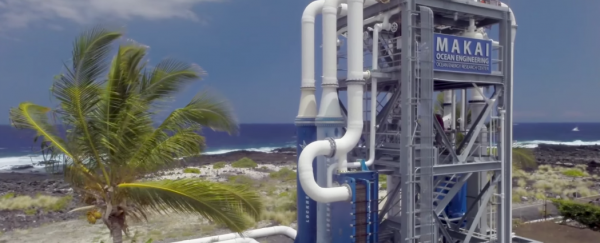As the demand for renewable energy grows, approaches that have previously gone out of fashion are coming back into vogue, and that includes Ocean Thermal Energy Conversion (OTEC) - the process powering a new power plant in Hawaii. OTEC takes advantage of the temperature difference between the chilly depths of the ocean and the warmer water found circulating near the surface.
The idea behind OTEC originated in 1881, as Mary Beth Griggs reports for Popular Science, with the first working implementation of it arriving in 1930. That power plant was destroyed by storms, and in subsequent years engineers struggled to make an OTEC plant that generated large amounts of energy in an efficient way. The several decades of low oil prices that followed seemed to have put paid to OTEC for good.
Now it's back, as the plant built by Maki Ocean Engineering proves. It's the largest of its kind in the world, and it's expected to produce power for up to 120 homes on Hawaii Island.
At the heart of the OTEC system is ammonia, which has a low boiling point compared to other liquids. First, it passes through pipes surrounded by warm water, which causes the ammonia to evaporate into a gas - this then powers a turbine and generates energy. Freezing cold water taken from the ocean depths (around 900 metres down) is used to reverse the process, returning the ammonia back to liquid form, and again powering turbines as it falls. Afterwards, the water is pumped back into the ocean.
Eventually, Maki Ocean Engineering wants to move its new plant from its current location at the Natural Energy Laboratory of Hawaii Authority (NELHA) further out into the Pacific Ocean, which would mean the pumped water having less distance to travel. The company estimates that 12 commercial-scale plants like this could provide energy for the whole of Hawaii.
One of the benefits of this type of technology is that it can run around the clock, with no peaks or troughs in supply. But the plant is still being treated as an experimental test run to see if OTEC can meet its potential more than 100 years after it was first proposed. Similar schemes are currently in operation in Japan and South Korea as well.
